Explore the Never, Former, Current Use Tool here
Découvrez l'outil ici here
Generally, our assessment of family planning programs focuses on contraceptive prevalence and current contraceptive users: what proportion of the population are using, the methods they are using, their demographic characteristics, etc.
However, this data doesn't fully capture the successes and limitations of family planning programs. Exploring the experiences and intentions of women who are not currently using contraception (those who have in the past and those who have never used) can help point to opportunities and barriers for family planning programs.
Track20's new “Current, Former, Never Tool” is designed to help users understand how women are distributed across these three groups, how that has changed over time, and what each group says about the successes and limitations of the family planning program in a given country.
Never Users - Women who have never in their lives used a method of contraception (can become current users)
Former Users - Women who previously used a method of contraception, but are not currently using (can become current users)
Current Users - Women who are currently using a method of contraception to prevent pregnancy (can become former users)
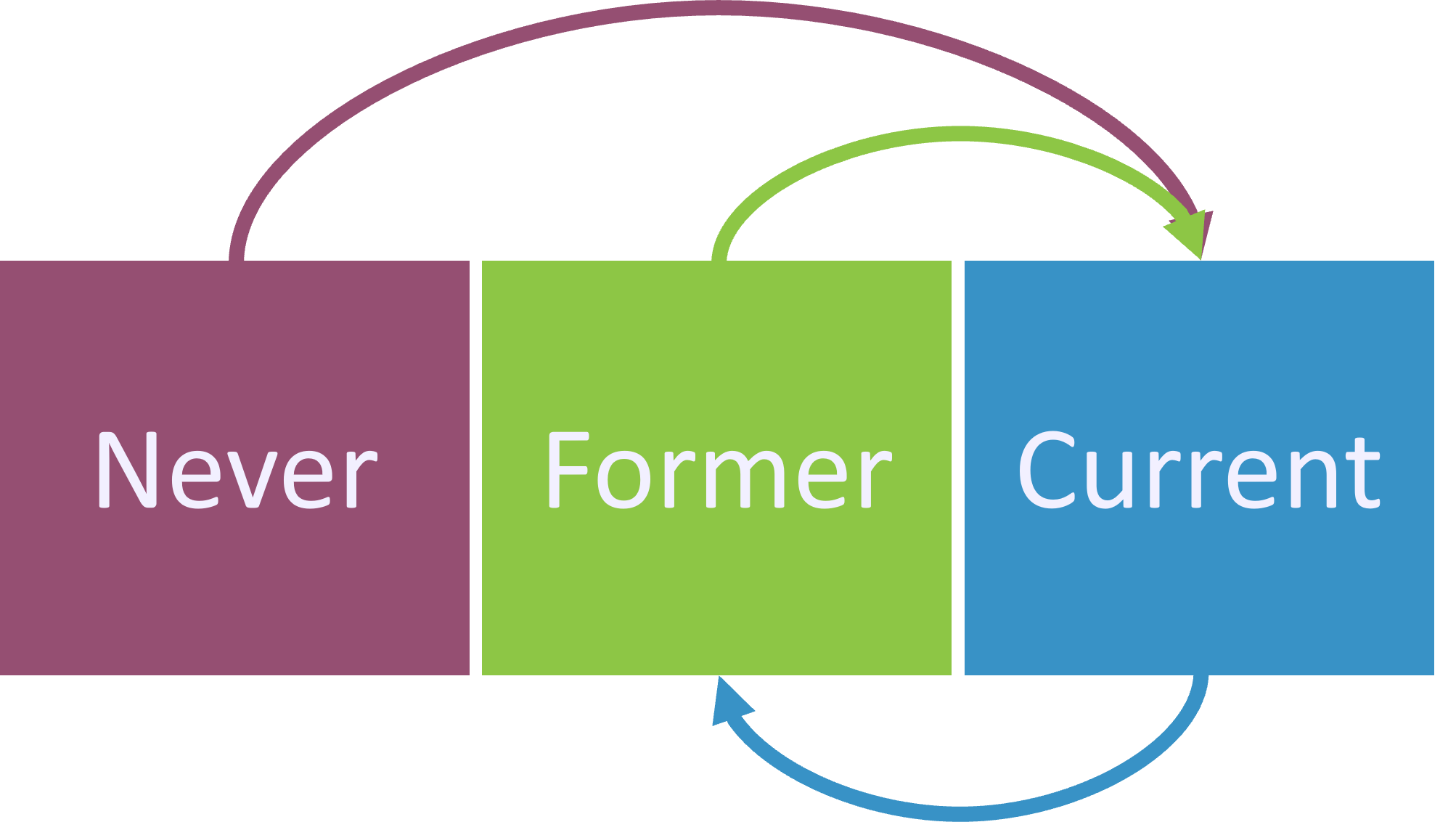
- All women start their reproductive lives as never users of contraception. Some use FP and become current users. They discontinue, becoming former users, until they start a new method.
- As family planning programs expand, we expect current users and former users to grow.
- Each of these three groups has programmatic importance, but the questions we ask differ
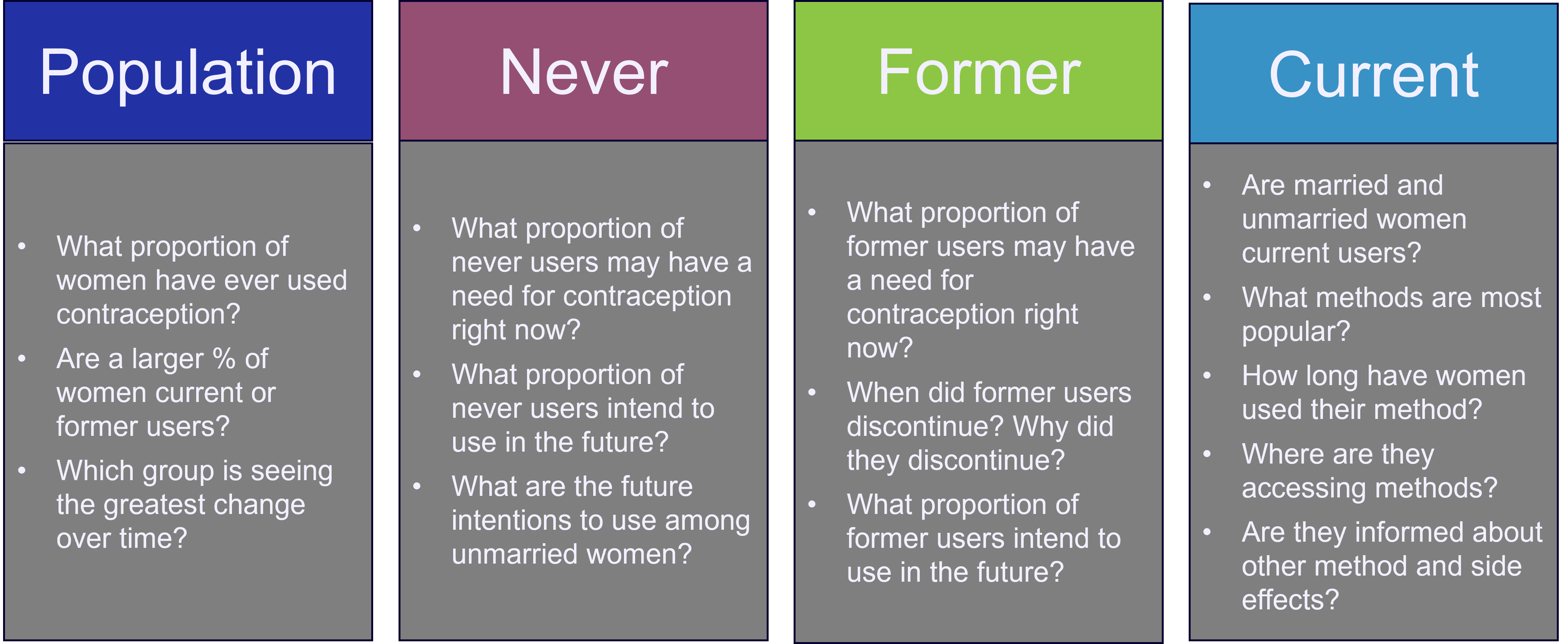
Changes over time in the distribution of women between these groups can help demonstrate progress that isn’t visible when looking only at mCP or current use. The combination of “Current” and “Former” users represents “Ever Use” or the proportion of women who have ever used a contraceptive method. Growth in ever use over time can demonstrate expansion in availability and acceptability of contraception and growth in ever use driven by former use can signify an increase in birth spacing.
When looking at the population and age distribution of these groups and changes over time, some questions to ask are:
- What proportion of women have ever used contraception? (How much larger is that group that current users?)
- Are a larger % of women current or former users? (Is the program expanding, maintaining, or losing users?)
- Which group is seeing the greatest change over time? (Is there substantial growth in former use without growth in current use?)
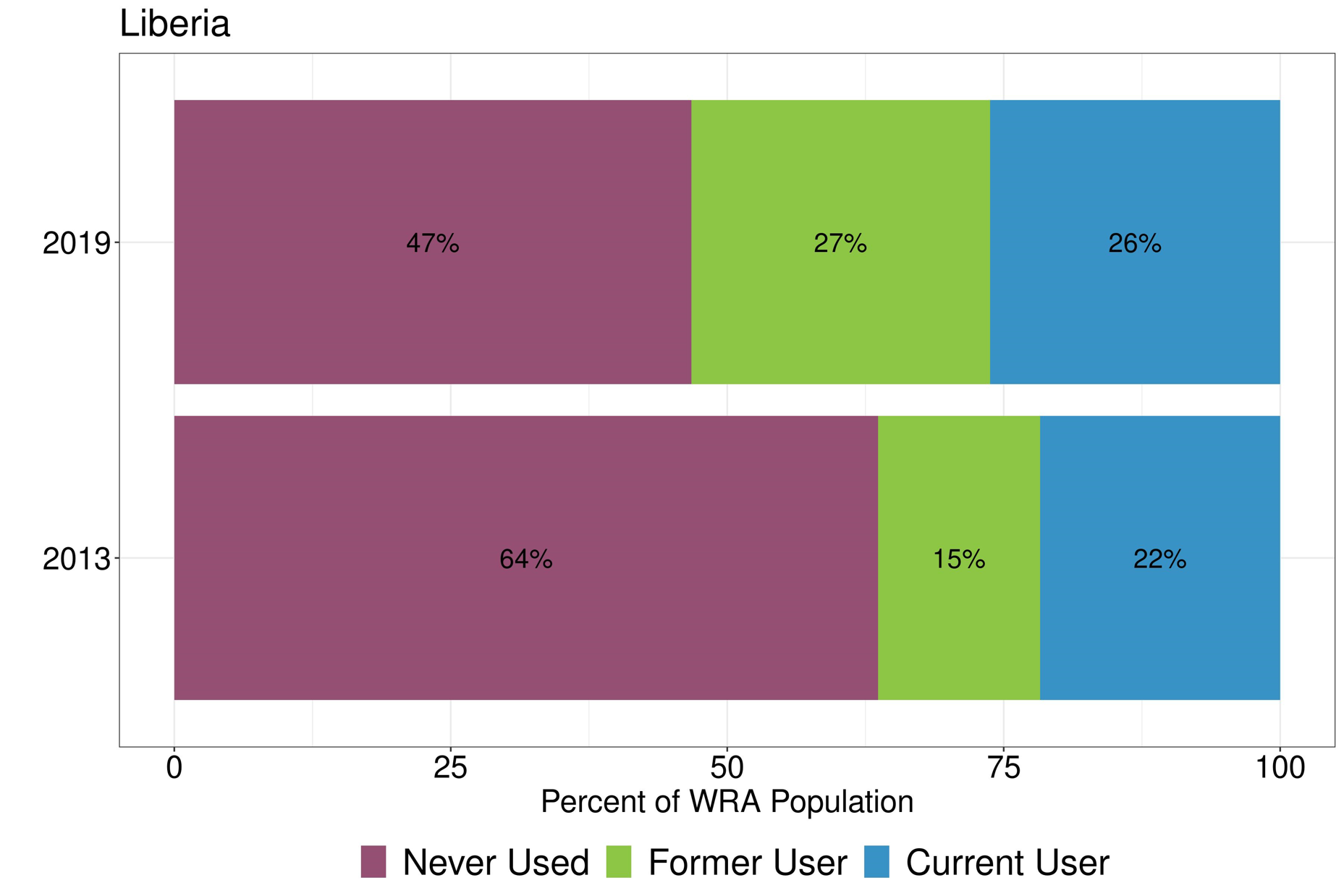
Never Users, or those women who have never used a method of contraception in their lives, can help us understand potential barriers to contraceptive use and the scale of potential growth. Understanding who makes up this group, whether they may have a current or future need for contraception, and whether they intend to use in the future can help in designing programs to meet their needs – women who have never used contraception likely need different messaging and have different barriers to use than those who have formerly used.
When looking at never users, some questions to ask are:
- What proportion of never users may have a need for contraception right now (ex. Unmarried and sexually active, or Married but desire to delay childbirth)?
- What proportion of never users intend to use in the future?
- What are the future intentions to use among unmarried women (usually youth) and how might that impact the future of your program?
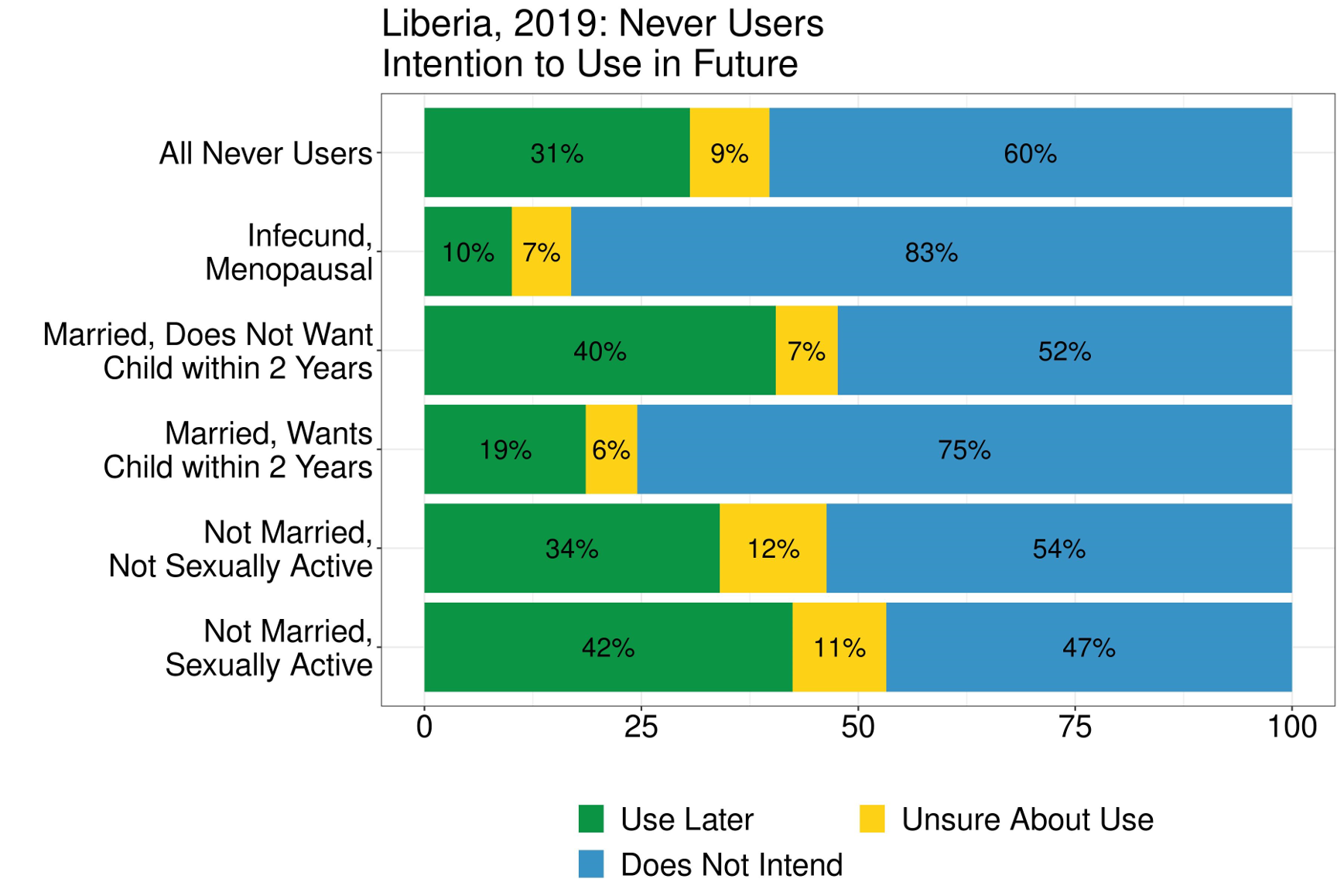
Former Users, or those women who previously used a method of contraception but are not using now, can help us understand possible issues within the family planning program. These women once chose to use a method but have discontinued – understanding the reasons for their discontinuation and their future intentions to use can help indicate where the program may need to make changes to help retain contraceptive users.
When looking at former users, some questions to ask are:
- What proportion of former users may have a need for contraception right now (ex. Unmarried and sexually active, or Married but desire to delay childbirth)?
- When did former users discontinue? Why did they discontinue?
- What proportion of former users intend to use in the future?

From Current Users, or those women who are currently using a method of contraception to prevent pregnancy, we can understand who is using, what methods are available, service quality, and source among other things - helping to improve our understanding of the services being provided and clients whose needs are being met.
When looking at current users, some questions to ask are:
- Are married and unmarried women current users?
- What methods are most popular?
- How long have women used their method?
- Where are they accessing methods?
- Are they informed about other method and side effects?
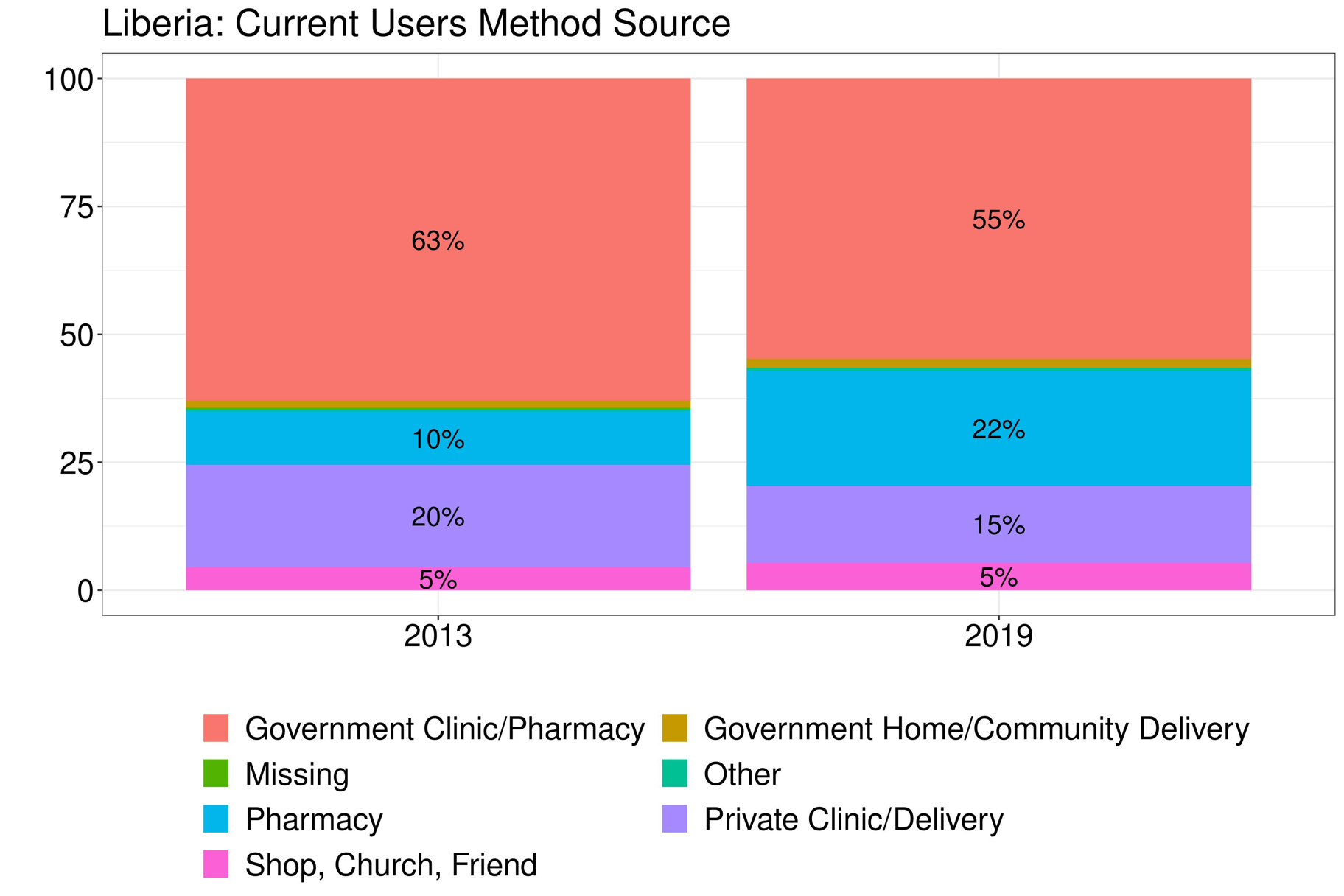
Explore the Never, Former, Current Use Tool here
Découvrez l'outil ici here
Code for calculating input data in R is available on the Track20 Github. In this repository, users can also find the code to create the Shiny apps which house the Never, Former, Current tool in English and French.